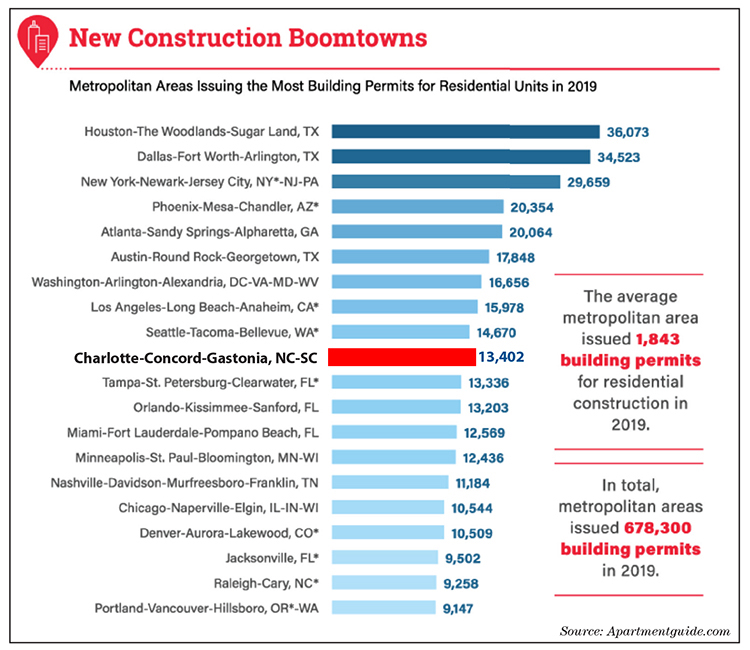
Dec. 10. By Dave Yochum. Here’s something new for Charlotte residential real estate: We were among the Top 3 US cities in terms of highest year-over-year gains in home resale prices. Charlotte real estate has not been prone to the stunning rises or declines in the past.
After a long period of decelerating price increases, it’s noteworthy that markets improved in September compared to August. It’s too soon to say it’s a trend, but Craig J. Lazzara, managing director and the head of Index Investment Strategy at S&P Dow Jones Indices, said the news is “reassuring.”
Charlotte joined Phoenix and Tampa with gains above 4.5 percent. Phoenix led the way with a 6 percent year-over-year price increase, followed by Charlotte with a 4.6 percent gain, and Tampa at 4.5% increase.
Once hot markets like San Francisco—minus .7 percent—and New York—plus a scant .8 percent—are either down or flat. The Top 20 US markets averaged out at 2.1 percent year over year, while the national average for all markets was 3.2 percent.
It’s good news for Lake Norman sellers, not so much buyers.
Fears about an imminent recession have faded considerably and net in-migration continues unabated. Indeed, Charlotte is among the top markets for homebuilders.
After the market crash a decade ago, less than 600,000 residential building permits were issued in 2009, a 26-year low.
By 2018, the housing market trended toward recovery, with about 1.3 million building permits issued for apartments and houses, according to ApartmentGuide. In 2005, the number of building permits issued for new housing construction was 2.2 million.
As of July 2019, there were 773,567 building permits issued for new residential construction nationwide — and it’s expected that new construction rates will continue to climb into in 2020, according to ApartmentGuide.
In the first half of 2019, the South saw the highest number of new housing units authorized with a total of 401,814. Western states were home to 196,610 new residences, while the Midwest and Northeast saw the fewest with 101,245 and 73,898, respectively.
The South is hot, and we’re not talking temperature. The South is home to 38.1 percent of Americans, but 52 percent of all building permits were issued in the South.
The region’s population continues to grow steadily, according to the UNC Charlotte Urban Institute. Between 1990 and 2000, the population grew about 25 percent to 3.1 million. Between 2000 and 2010, there were another 600,000 people. As 2019 comes to a close the population is a little over 4 million.


Discussion
No comments yet.